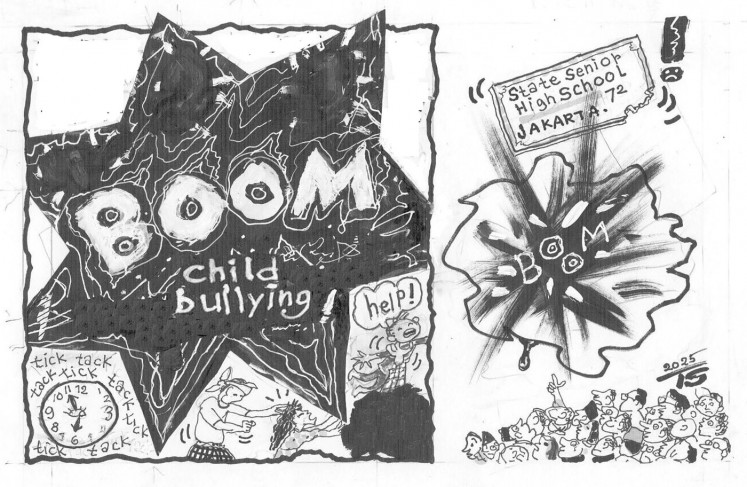Popular Reads
Top Results
Can't find what you're looking for?
View all search resultsPopular Reads
Top Results
Can't find what you're looking for?
View all search resultsResearchers reveal ancient housing site in Malang
An archeological dig conducted on the southern side of the Singhasari Temple in Bungkuk village, Malang, East Java, has uncovered an ancient residential complex
Change text size
Gift Premium Articles
to Anyone
A
n archeological dig conducted on the southern side of the Singhasari Temple in Bungkuk village, Malang, East Java, has uncovered an ancient residential complex.
The confirmation was announced to the public on Thursday by a team of researchers from the National Archeology Research and Development Center (Arkenas), in Jakarta, after excavating the site from July 22.
"We believe it was a residential complex from the Singosari Kingdom during the rule of King Kertanegara in the 13th Century," team leader Amelia said.
The team, which is scheduled to conduct the dig until July 31, has found the remains of rough and fine pottery, fine quality porcelain and ceramic wares, roofing materials and Chinese coins with holes in the middle, believed to have originated from the Sung Dynasty (between the 10th and 13th centuries).
"According to our prediction, the residential site belonged to middle and upper-class communities from that time period," Amelia said.
The prediction, she added, was mostly based on the findings of the fine quality porcelain and the Chinese coins.
She said it was impossible for the then grass roots communities to have owned such fine household objects when their houses would have been mostly made of plaited bamboo.
The dig, according to Amelia, were performed every 100 meters along a 1,000 meter line to the south of the temple.
Remains believed to be the foundation structure of a very big building were found on the first excavation site and were made of ancient bricks. A structure built from river stones, was also found inside the brick structure."This building technique is known to have originated from the ancient Javanese era," said Amelia, adding that the same structure was also found at points along the excavation line.










